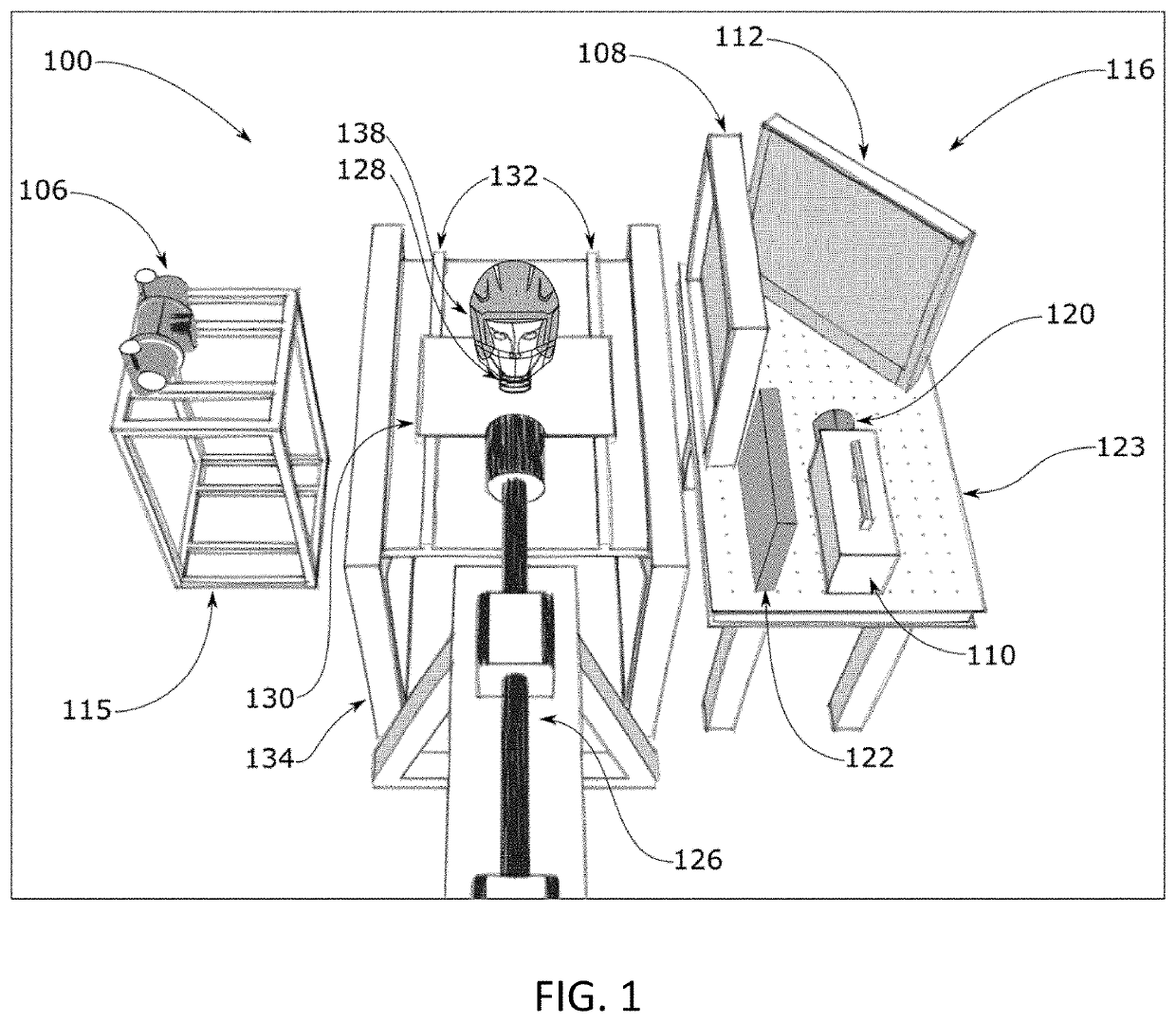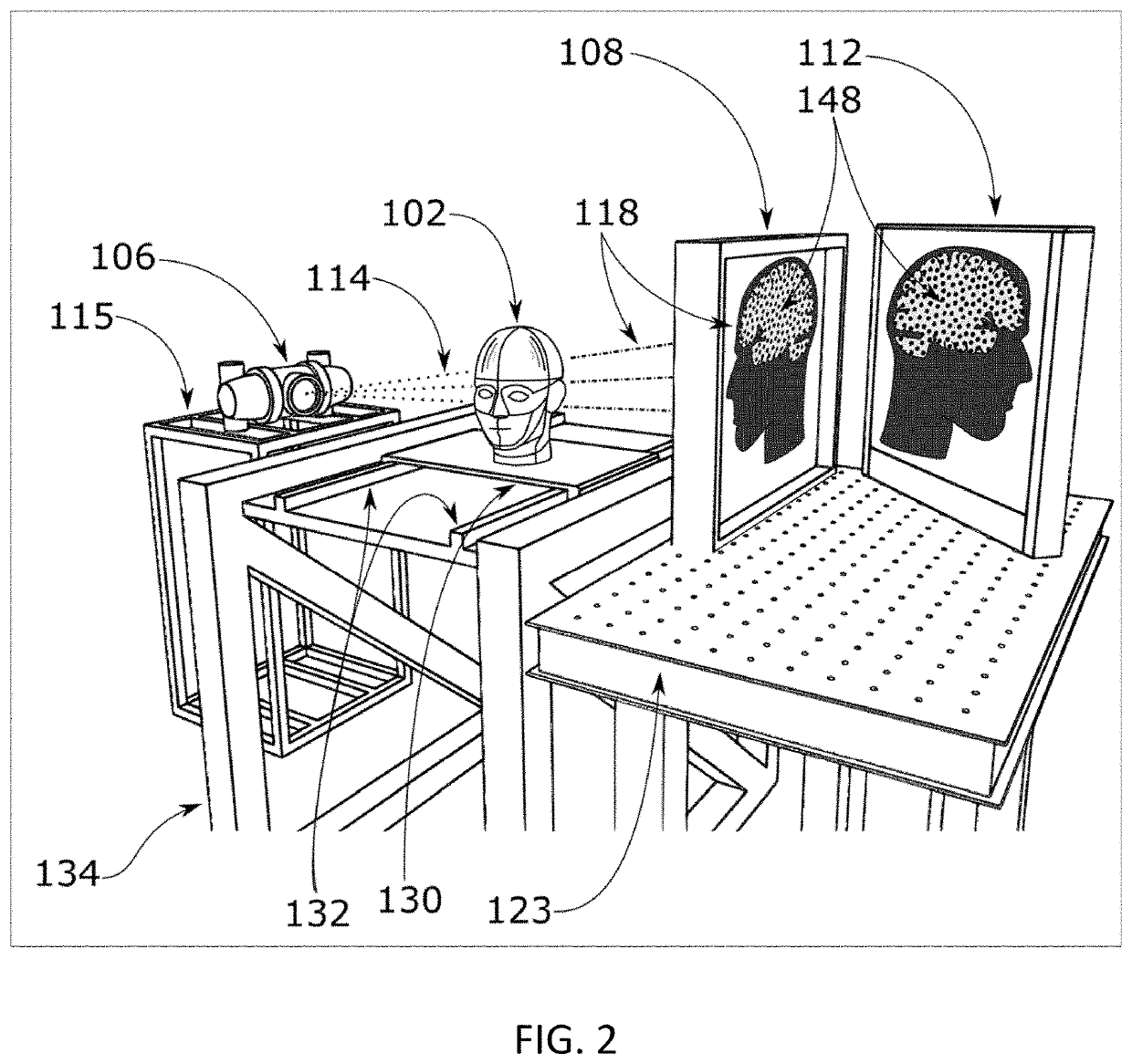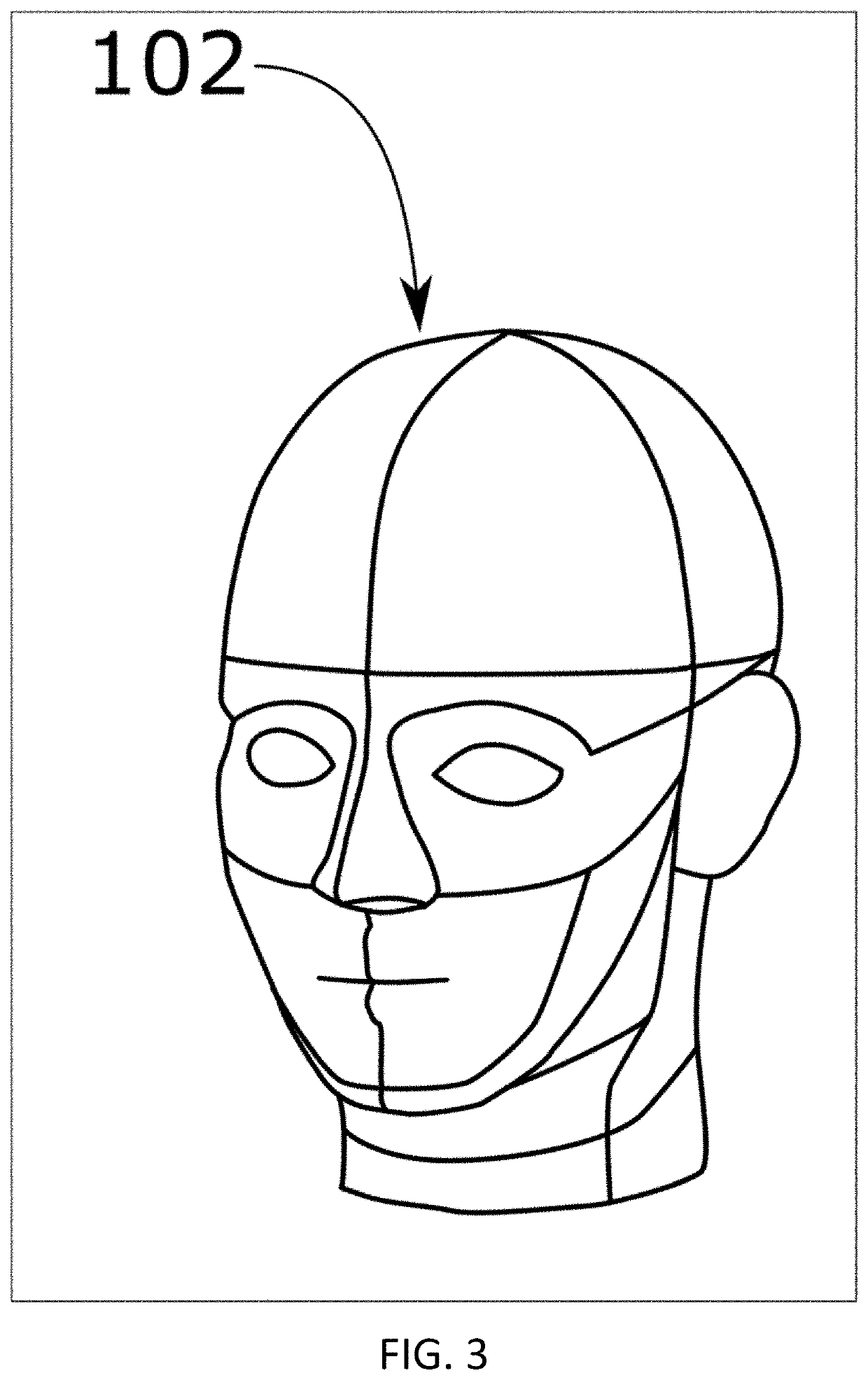Cineradiography-based method and apparatus for testing protective headgear
a protective headgear and imaging method technology, applied in the direction of applications, structural/machine measurement, instruments, etc., can solve the problems of poor diagnostic and treatment, high possibility of trauma, and detrimental health outcomes, and achieve the effect of improving the clarity of radiographic images
- Summary
- Abstract
- Description
- Claims
- Application Information
AI Technical Summary
Benefits of technology
Problems solved by technology
Method used
Image
Examples
embodiment
Preferred Embodiment
[0031]The testing method and preferred embodiment of the cineradiography-based protective headgear testing apparatus 100 involve the use of X-rays to observe the impact force response of headgear, typically in the form of a helmet 104, placed on a headform 102. Impact events are highly dynamic events that require high temporal resolution to adequately capture the response of the helmet resulting from the application of the impact force. A desirable image capture rate, to properly resolve the impact with confidence, would require between 5,000 and 10,000 frames per second. With a continuous X-ray source, this is achievable for an extended capture period, provided the source and receiver optics are properly tuned.
[0032]Shown in FIG. 1 is the preferred construction of the cineradiography apparatus (“X-ray system”) 100 to capture the response of the headform 102, the helmet 104, and their interaction. This cineradiography system is optimized for high speed image capt...
PUM
 Login to View More
Login to View More Abstract
Description
Claims
Application Information
 Login to View More
Login to View More - R&D
- Intellectual Property
- Life Sciences
- Materials
- Tech Scout
- Unparalleled Data Quality
- Higher Quality Content
- 60% Fewer Hallucinations
Browse by: Latest US Patents, China's latest patents, Technical Efficacy Thesaurus, Application Domain, Technology Topic, Popular Technical Reports.
© 2025 PatSnap. All rights reserved.Legal|Privacy policy|Modern Slavery Act Transparency Statement|Sitemap|About US| Contact US: help@patsnap.com



